Get to know
Click on our icons to find out what achievements are being celebrated this year. You can find the achievements celebrated at all level of our ambitious project: from project management, to Regional Clusters to Digital Innovation Hubs, Competence Centers and Flagship Innovation Experiements.


cc interview
Regional cluster quote

Ireland & UK

France

Central Europe

Name: Ghent University – Biosystems Engineering Research Group
Location: Ghent, RC North-West Europe

South-East Europe

Scandinavia

Name: Edwin Hecker
Work Package: Eccosystem Building
France
FRench cluster
France
“SAH contributes to the digitalization of the ag sector by promoting farmers’ financial and digital access to innovations, mainly through the Digital Innovation Hubs growing network.”
Aquaculture in Germany
An interview with Mrs. Birgit Schmidt-Puckhaber from the German Agricultural Society
Aquaculture is a fast growing sector worldwide and plays an important role in providing food for the growing world population. Various farming systems from ponds to net cages to closed systems produce fish, mussels, crustacea and algae on all continents.
But what about aquaculture in Germany?
Birgit Schmidt-Puckhaber from the German Agricultural Society (DLG) answered our questions about this. She is project manager of aquaculture at the DLG and runs a fish farm with her family in the North of Germany.
Could you give us a brief overview of aquaculture in Germany: Which forms (types of farms) and which kinds of fish are the most common?
Aquaculture in Germany is dominated by conventional fishponds. These ponds utilize a natural source of water for aquacultural purposes, which requires a special permit. Ponds are bodies of water that can be drained, unlike lakes, which cannot be emptied and re-filled. We distinguish between warm- and coldwater fish culture, depending on the kind of fish that is being reared in these ponds. In warmwater ponds (carp etc.), water is flowing at low rates and has a high temperature. These ponds are primarily used for cyprinidae in conjunction with compatible fish (tench, zander, catfish, etc.). Salmonid fish (Rainbow trout, brown trout, etc), on the other hand, prefer clear, cool, flowing water. As a result, coldwater ponds tend to be longer, have a higher flow rate, and are filled with clear, cold water. Both types of ponds use naturally occurring water for breeding fish, and the water is returned to nature (i.e., a creek or river) after passing through the pond. Unlike in conventional ponds, the water used in so-called RAS systems (Recirculated aquaculture Systems) is purified in special filters for re-use. As a result, these systems require only a fraction of the water used in conventional ponds. However, these systems require heat and electrical power for rearing fish and water purification and bear a higher technical risk. They are used for catfish, sturgeon, and eels, as well as for prawns in salt water systems.
In 2018, the number of farms that relied primarily on producing fish in aquacultures was approximately 2 600, with most farms operating warmwater ponds (1 700), followed by coldwater farms (1 060), and only 45 RAS Systems (Recirculated Aquaculture Systems).
How does aquaculture in Germany compare to the rest of Europe and the world?
We can be proud of our fish farmers and the traditional pond farms, but we only play a minor role in European and international markets. In 2018, German aquaculture produced 31 900 tons of fish, mussels, shrimps and algae, but could not even come close to meeting the national demand for fish and seafood. We rely heavily on imports when it comes to fish – Germany imports 87 % of the demand of fish and seafood. The production of carp and trout in Germany has not increased in years; only the yield from RAS systems is steadily growing.
Is there a typical “German” fish that has a rich tradition of being farmed in this country?
Yes, there is. Even if we cannot shine with large yields, fish farming is an important part of German culture, and especially carp farming has a long-standing tradition here. It contributes to the typical landscape of several regions and forms a mainstay of our culinary tradition. Anyone who ever tried a tasty Franconian baked carp will never forget this experience. The main areas of production are in Saxony and Bavaria.
Where do you see future opportunities? How about, for instance, “German shrimp”?
I believe that the most lucrative opportunities arise wherever there is something special about the product, some kind of story. This can be a certain sign of quality, a special way of producing or selling the fish, or a beautiful place where buying fish is a special experience.
Fresh prawns from Germany are such an experience. Everybody knows frozen prawns, and consumers love using them for all sorts of recipes. But fresh prawns from a well-run salt water prawn farm are an entirely different - and delicious - product; a real treat for the senses. However, I would argue that this model can only be successful if it stays limited to a small number of farms, so that the price of around €50 per kilo can be maintained.
Germany imports approximately 80 % of its fish and seafood. Which growth opportunities do you see in the German market, for instance when it comes to meeting the national demand for fish and seafood?
Regional production is promising. I can once again point to the challenging task of convincing restaurants and consumers in your own back yard with your very own products, and getting local grocery stores involved. German fish farmers will not succeed by trying to ramp it up and offering their products at global market prices. Apart from the traditional farming systems we see various start - ups – combining the production of aquatic organism with plants, so called Aquaponic systems. These systems are very innovative and can be installed everywhere, also in the middle of the City. I guess, these “urban farming systems” will grow and can bring people in the cities back to primary production,
What is your favourite fish to eat and how do you prepare it?
A fresh perch fillet from lake Selent in Schleswig-Holstein, just blanchéd in butter and served with roasted almond slivers - that’s our absolute favourite.
aquaculture in romania
Interview with the NUCET Institute
How would you describe your project?
The project aims to produce and use the zooplankton biomass as food for the growth in the post-embryo development stage of some valuable fish species, such as sturgeons, zander and European catfish that are the object of intensive farming in Romania. The purpose of the project is to produce the stocking material necessary for the development of aquaculture farms.
What is the problem that you target, and what solution do you offer?
All fish species feed on the early stages of development with live food (algae and zooplankton). The problem encountered, at farm level, is the fact that insufficient quantities of live food are produced. As a solution there is the possibility of creating two production systems of live food, at industrial level, in a controlled environment, in the required quantities and during the desired period.
How many aquaculture farms do you work with and what do they mostly need help with?
S.C.D.P. Nucet produces stocking material of different ages for about 80% of the aquaculture farms in the country. Within the institution there is a counselling centre that ensures the technological transfer and assistance for the implementation of new technologies and methods. These two activities ensure permanent connection with the farmers.
What have been one or two of your most successful cases?
A successful project was the introduction of North-American sturgeon - Polyodon spathula - in aquaculture from Romania. Within S.C.D.P. Nucet was elaborated the growth technologies in different systems that allow to obtain sturgeon meat and caviar in fish farms. Also, within the station was developed artificial reproduction technology that allows producers to obtain stocking material for aquaculture farms in Romania and neighboring countries.
Currently, S.C.D.P. Nucet is also creating a collection of species and breeds of freshwater fish (genotheque), which comprises about 30 genetic entities, represented by about 90 lots of different ages, being unique in the country.
According to you, what are three factors aquaculture farms should start implementing as soon as possible?
- Farms should implement modern technologies to increase the productivity and quality of production from aquaculture farms.
- Farms should implement monitoring programs to reduce pathological risks in aquaculture, reducing losses and ensuring animal health and welfare.
- Farms should diversify their production by introducing species of high economic value.
What are the key challenges aquaculture farms encounter when it comes to improving their sustainability, animal welfare and public health standards?
Upgrading of existing farms and construction of new production capacities.
Adapting the supply to the demand, both in terms of quality and quantity, to increase the benefits brought by aquaculture products to consumers, as well as the producers incomes.
The necessity of connecting Romanian producers to quality regulations / norms / standards imposed by the applicable national and European legislation in terms of the post-harvest phases ( labeling, transport, marketing, hygiene, etc.). Especially relevant are the technological phases of production (regulations regarding the good state of fish stocks, environmental protection and biodiversity).
The need for specialisation of the personnel from the fish farms and the attraction of young people in the fisheries sector.
Italy
&Malta
Iberia
iberia
Spain + Portugal
What role does aquaculture play in your region?
Spain is the number one aquaculture producer in the EU-28, with a 23% of the total volume produced in 2015 (Eurostat). The production is dominated by mollusks (80% of the total) - mainly mussels, produced in the Galician region (NW Spain). The aquaculture sub sector is very relevant for Galicia, where traditional extensive mollusk production provides jobs for families (and remarkably a high share of women) in rural coastline areas. Additionally, there has been an increase in marine fish production due to the establishment of several production plants throughout the last decades.
Another important region is Andalusia (particularly Cadiz):
- Andalusia accounts for 20% of the production of marine aquaculture in Spain.
- Marine aquaculture account for 22% of the total production value and around 11% of the fishing and aquaculture sectors’ direct employment.
- The value of production amounts to €70M.
- Production is expected to increase by 44% (to 14,000 tons) in 2020. - 95 companies and 160 authorize establishments (138 on land and 22 at sea) are active in the sector
In comparison, aquaculture in Portugal plays a much more discrete role. Nevertheless, “esteiro” fish production plays an important role in littoral regions, mainly on old salt producing areas. Lack of infrastructure (mainly ports) diminishes the marine fish production potential of the country’s vast coastal area.
Do you have FIEs/DIHs on aquaculture in your region? How do you help them?
The Andalucía Agrotech Digital Innovation Hub provides support for new developments and integration/connection between needs of aquaculture companies and new technological services that are being generated in the sector. There is a Competence Center within this DIH with strong focus on aquaculture, called CTAQUA (Aquaculture technological Center of Andalusia). In addition, the Research Center of the Regional Ministry of Agriculture (IFAPA) also hasa line of R&D on aquaculture. The other DIH in aquaculture is DATAlife (Gradiant is one of its promoting CCs).
What are currently the most important developments in aquaculture, according to you?
The development and uptake of data analytics and artificial intelligence specifically tailored to a wide range of use cases within the aquaculture sub sector. Other developments include sea water mapping, the application of new techniques to extend shelf life, and new products that are innovative, sustainable and easy to consume (e.g. seaweed for animal feed).
Italy & Malta
In this first year of the project, Regional Cluster Italy & Malta tried mainly to build a culture of Digital Innovation Hubs in the agricultural sector.
This has been done by attracting EIP Operational Groups focused on digitalization of agriculture. If well established and developed, they could serve as Digital Innovation Hub: they were indeed born to introduce innovation in the agricultural sector, putting together farmers, universities, researchers, tech providers and advisors. Their approach is therefore aligned to the one of Digital Innovation Hubs, but they have short-term deadlines. Investing in their development means to exploit an already established network of subjects, interested in innovation of the agricultural farms to create Digital Innovation Hubs.
This knowledge building also went through the publication of articles and interviews on magazines specialized in agriculture. This in order to support the established Flagship Innovation Experiments and promoting their achievement and analysing needs and barriers of the agricultural sectors. Such as low culture of Digital Innovation Hub, lack of awareness of digital solution in agriculture and lack of expertise in this specific field. Now we will continue our commitment also by the tools provided by SmartAgriHubs.
Central
Europe
Central Europe
Regional Cluster Central Europe including Austria, Czech Republic, Slovakia, Hungary and Switzerland, promotes regional developments in digital faming as well as in smart farming start-up ecosystems. Overall, we aim to identify relevant actors and connect them with the unique network of SmartAgriHubs.
Innovators in Central Europe’s agri-food sector come from a variety of backgrounds: they include farmers, researchers, startups, small and medium-sized enterprises, advisors, and many more. The mission of Regional Cluster Central Europe is to map these actors and establish links between them in order to facilitate synergies within and beyond the region, thereby enabling the digitization of the agri-food sector.
Accordingly, our Regional Cluster supports different actors in finding innovative partners in the field of digital architecture by using the SmartAgriHubs network. Furthermore, it provides supportive measures such as the identification of public and private funding opportunities, as well as the coordination of new innovation experiments within the wider SmartAgriHubs network. We achieve this by connecting local Digital Innovation Hubs, with Competence Centres, and Innovation Experiments, thereby establishing an ecosystem capable of interacting with other ecosystems across Europe.
Central Europe offers a distinguished pallet of digital innovators and agri-food businesses. The Regional Cluster capitalizes on this asset by building a comprehensive ecosystem of actors, allowing new ideas to flourish to help find solutions for the agri-food sector.
Iberia
Competence Center INESC-TEC
Spain and Portugal
What is the core business of your Competence Centre?
The core business of this Competence Center is Research and Technological Development in ICT&E and Robotics. We are a Portuguese private and non-profit association for Research and Technological Development in ICT&E and Robotics. We act in all phases of the Smart Precision Agriculture cycle, i.e. Data Acquisition, Decision Support System, Prescription and Action with VRT, and regarding Food Security and Bioeconomy.
What was the biggest challenge that you have encountered in the past year?
The biggest challenge is the lack of resources to answer to all the requests that we get.
IWe are celebrating the one year anniversary of SmartAgriHubs, what successes have you celebrated last year?
We have celebrated the growth of TEC4AGRO-FOOD (INESC TEC’s Initiative for Agro-Food and Forestry) both at national and European level!
TEC4AGRO-FOOD mission is co-shaping the digital (r)evolution in Agro-Food and Forestry to tackle the productivity and sustainability societal challenges towards an effective bioeconomy.
What are you most proud of?
The fact that the 5th INESC TEC Autumn Forum theme was “The Digital (R)evolution in Agro-Food and Forestry”.
And also the participation in the ongoing H2020 projects:
“agROBOfood: Business-Oriented Support to the European Robotics and Agri-food Sector, towards a network of Digital Innovation Hubs in Robotics”.
“DEMETER - Building an Interoperable, Data-Driven, Innovative and Sustainable European Agri-Food Sector”.
What advice would you give to the other CCs of SmartAgriHubs?
Clarify DIH’s mission, vision and role and get a stronger involvement of its Competence Centres;
Further disseminate/advertise the role of DIHs as a promoter of the digital (r)evolution of Agro-Food and Forestry at an End Users level;
Further involve the Agro-Food and Forestry’s End Users with the DIHs;
Funding to proceed with DIHs mission, vision and role.
Contact information
André Sá
Email: andre.sa@inesctec.pt
Website: www.inesctec.pt
Twitter username: INESCTEC;
Organisation LinkedIn: https://www.linkedin.com/company/inesc-tec
Organisation Facebook: http://www.facebook.com/INESCTEC
Instagram username: inescte
North East Europe
North east europe
North-East Europe
Regional Cluster North-East Europe had an intense year with many achievements in terms of organization and participation in relevant events, the establishment of connections and collaborations, as well as the creation of the informative materials.
In a region with a predominant percentage of rural area, with a significant number of farms (only Poland has ~ one eight of EU-28 farms), and with a contribution to GVA of the primary sector above the EU average but characterized by the low productivity, SmartAgriHubs project can deliver a significant impact.
Some of the key achievements of our Regional Cluster include the organization of one of the first Regional Clusters’ events, which took place in Poznan. Various stakeholders of the agri-food sector participated: Digital Innovation Hubs and Competence Centers, agriculture advisory centers, public institutions as well as industry representatives. The workshop included presentations as well as an interactive session where the participants proposed and developed ideas to address key challenges in the region, which were provided as input to the organizers of the SmartAgriHubs open call.
Our Regional Cluster has supported the ongoing Flagship Innovation Experiments activities, monitored and tracked their progress, including the organization of multiple working meetings. We are proud for the establishment of the first agri-Digital Innovation Hub in Poland, which was planned at the beginning of the project and establishment of AgriFood Lithuania Digital Innovation Hub. We have established important collaborations and agreements, including the understanding with a Venture Capital fund to co-fund the upcoming open call in Poland and potentially other countries in the region. We also organised and participated in many events where we disseminated SmartAgriHubs, including:
Agroshow - Poland (one of the largest open-air agriculture exhibitions in Europe with over 140.000 visitors), co-organised by one of the Polish Flagship Innovation Experiment leaders, which included a SmartAgriHubs event featuring presentations and discussions panels with directors of different institutions as panelists;
Presentation of SmartAgriHubs and Regional Cluster at the Digital innovations for agriculture - 4th Knowledge and Innovation Forum in Warsaw;
Panel discussion in Agribusiness Forum 2019 in Vilnius, Lithuania and in “The New Age of Agriculture” Brussels;
Meetings with 3 Baltic countries farmers organisations;
Seminar in the agriculture autumn fair in Ramava, winter educational seminars for farmers and Union Farmers Parliament congress
Our Regional Cluster also helped in the creation of the promotional videos of some of the Flagship Innovation Experiments, carrying out interviews with farmers, shootings of technologies, and video editing. Furthermore, our Regional Cluster organised and produced an interview with the vice-minister of agriculture and rural development in Poland, which will be released at the SmartAgriHubs stakeholder event!
North West Europe
Ghent University – Biosystems Engineering Research Group
Ghent, RC North-West Europe
What is the core business of your Competence Centre?
Ghent University is a top 100 university and one of the major universities in Belgium. The Biosystems Engineering Research Group focuses on education and research in the field of agricultural engineering with emphasis on precision farming and glasshouse horticulture often using image analysis.
What was the biggest challenge that you have encountered in the past year?
Apart from keeping research organised during the actual Corona crisis, getting our end-users involved and enthusiastic about our research. As our end-users are farmers, daily working in the field, in their animal houses or glasshouses, it is important to come up with ideas that combine novelty with feasibility and profitability for the farmer.
We are celebrating the one year anniversary of SmartAgriHubs, what successes have you celebrated last year?
It was encouraging to see that the farmers – after one year of collaboration – really appreciated the small steps and advances in research, making suggestions on how to implement them and how to adapt the next year experiments in a way that allows to provide answers to their most urgent questions.
What are you most proud of?
Being part of the larger UGent community, we are proud to see that our high ranking University not only cares about publications and rankings, but also about providing answers to the broad society, including agriculture and horticulture.
Contact information
Jan Pieters
http://www.facebook.com/ugent
http://www.linkedin.com/company/ghent-university
http://www.youtube.com/user/UniversiteitGent
https://www.instagram.com/ugent/
South East Europe
South east europe
“South-East Europe is getting out of the early stage of developing and adopting digital agrifood among its countries. There is an increasing trend of digitial initiatives, addressed by quite brilliant local inovative ITC private companies towards individual farms, but wide collaboration among farmers, cross-sectoral collaboration and large scale projects are not yet common. However, during the first SAH year, our emergent SEE innovative DIHs & CCs started to be more aggressive towards the agrifood communities, as our RC leader and co-leadership have been learning, step-by-step, how to be more active in achieving new ways forward, into identifying real ”champion dots” and how to properly start connecting them accordint to the SAH concept, which is to be crucial for the SEE region!”
Ireland
& UK
Ireland & UK
Connecting the dots at local/regional level:
“Being Regional Cluster Lead for Ireland and the UK for the first year, placed us at the heart of the 2 FIE’s located in Ireland, and gave us an insight into the success of the experiments. As a mature DIH in Ireland, building the network of multi-actors within our region and linking them into the interactive portal was exciting, as we disseminated information on the project into DIH’s, CC and the farming community to begin the digital transformation of the AgriFood Sector across Europe. “
“Being Regional Cluster co-Leads this first year of the project and working on helping farmers to put innovation in practice, we enjoyed being the go-to incubator and disseminator of the latest developments in the field.”
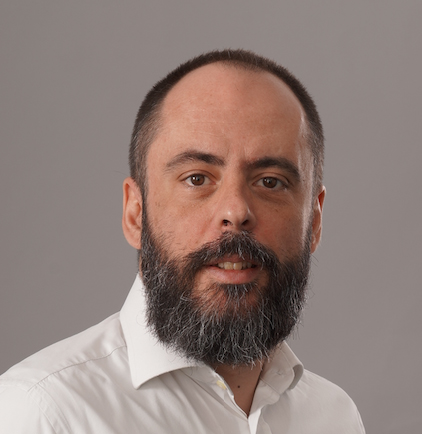
Grigoris Chatzikostas
leader of Work Package 3
Monitoring & Evaluation of IES
Workpackage 3
Custom. Original. Tailored. All of these are buzz words which have gained popularity in recent years. Everybody is trying to be original, different, “the one”. Yet many times we forget we do not need to re-invent the wheel in order to make a great product or a service. Sometimes all it takes to be unique is to take a great idea and make it better, improve it, build on it, reuse it.
Reusability is something which is popular in coding, in information technology, as well as environmental studies. However, the basics of the concept can have a wider use in almost every industry branch. When working on an innovative idea, whether it is a product or a service, we should first do some research. We have to see if the idea we have matches some of the products and services on the market in some aspect. Besides, we have to check if we could reuse those aspects to make our idea stronger.
It has been proven that reusable components contribute to the efficiency and consistency of people working on the idea. This is especially significant in an environment where innovations are not only supported, but also encouraged, such as the environment of Digital Innovation Hubs (DIHs). This is where multiple ideas are worked on simultaneously and where some of them might overlap in specific areas.
Within SmartAgriHubs, Flagship Innovation Experiments are working on many groundbreaking ideas. This varies from using sensors in Aquaculture, to monitoring bees and predicting their behavior. The output from these experiments will not only be of use to the Flagship Innovation Experiment, but the technical and non-technical components from the Flagship Innovation Experiment could also contribute to other innovators within agriculture who will be able to reuse these components.
The umbrella of technical and non-technical reusable knowledge varies from expertise and practices that were gained by farmers, to Application Programming Interface, Internet of Things stations and sensors. Workpackage 3 not only nurtures the further investment in developing them, but has also encouraged Flagship Innovation Experiments to work together on finding common ground among themselves on which they can jointly build solutions which will benefit all experiments which are involved.
Since the number of benefits of reusing ideas and components are vast, workpackage 3 will keep a close eye on this specific aspect of the project. Stay tuned!

edwin hecker
leader of Work Package 1
Monitoring & Evaluation of IES
Workpackage 1
How can we set up, but also maintain a network for smart farming? Our stakeholders are very important and communication at all levels is crucial and indispensable. Therefore, we are committed to bringing people together and developing communication tools to empower our stakeholders. We successfully connected the first dots past year -both online and offline - and we laid a foundation for the upcoming years.
We launched the SmartAgriHubs portal, the central hub for all SmartAgriHubs interactions. DIHs, FIEs, or CCs can find relevant information regarding the project but also exchange experiences, best practices and share knowledge within the agri-tech network in Europe. With more than 1000 users in the first months, the Portal is definitely the place to be for anyone related to the digital agriculture.
Our work entails organising events as well, like our first conference in Prague where partners met for the first time. Three days of valuable interactions that helped the community to get a feeling of its magnitude. Workshops, exhibitions and shared events were also organised throughout the year and a special attention was given to our RCs who are “the ears and eyes” of the project on the ground.
The ecosystem is growing and so are our communication products. From leaflets to postcards, videos, online games, social media campaigns and online articles we spread the word on the valuable work done by our community.
Our plans in the next period? Continue working on connecting more dots in 2020. In the end: it is all about our community and communication!
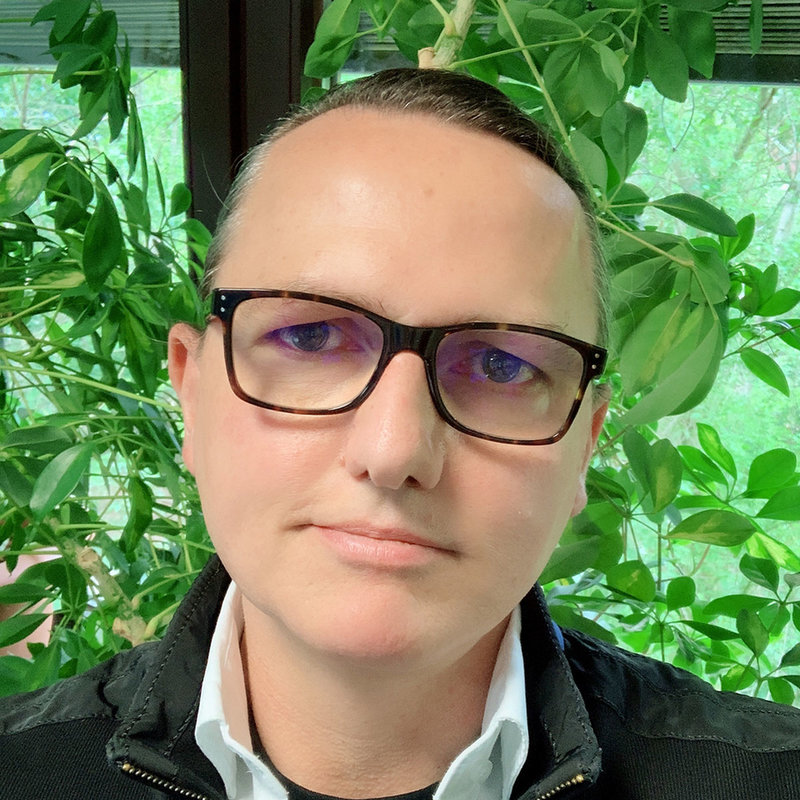
Harald Sundmaeker
leader of Work Package 2
Open Call and Funding
Workpackage 2
SmartAgriHubs is active in all 27 member states of the European Union, collaborating with the 9 regional clusters and represents a large network of active project partners. This is just the start of establishing a pan-European initiative for Digital Innovation in the Agri-Food sector.
As a cornerstone, workpackage 2 is preparing an open call for activities by additional Digital Innovation Hubs and collaborating with Competence Centres, to support specific Innovation Experiments in their regions.
The first year was used to understand the current situation and regional demands. Diverse events, organised by SmartAgriHubs partners as well as other stakeholders, were used to identify and discuss thematic priorities, the regional funding landscapes, and needs for matchmaking by potential proposers.
The workpackage 2 team elaborated a draft open call, used for discussion and validation of the underlying strategy with representatives from numerous Digital Innovation Hubs, Competence Centres and Innovation Experiments. At the same time, the workpackage 2 team is preparing an approach for matchmaking that will enable new stakeholders to get in contact with the current SmartAgriHubs Partner Network for tangible collaboration in the scope of proposed activities.
It is planned to publish the open call towards May this year. Stay tuned for more information.
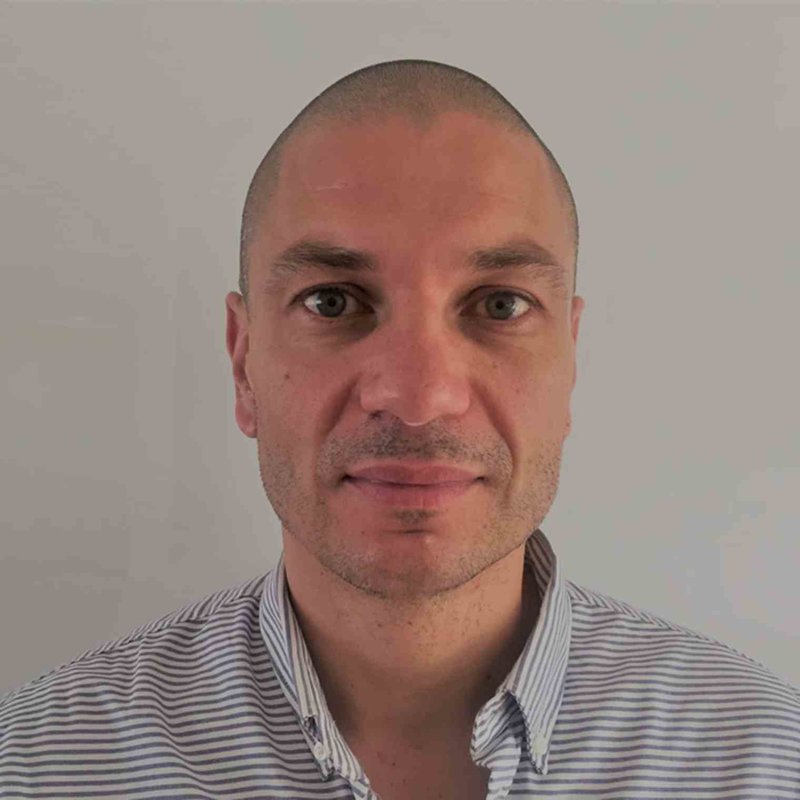
Frank Berkers
leader of Work Package 4
Development DIHS
workpackage 4
Digital Innovation Hub Capacity Building and Monitoring’s mission is to support Digital Innovation Hubs in building their capacities, so they can effectively achieve impact with innovations aimed at the farm or greenhouse, and become self-sustaining entities in a thriving Digital Innovation Hub community.
The first year of workpackage 4 therefore evolved around laying the foundation for capacity building. A crucial starting point thereto was the “needs assessment” that pinpointed key learning areas, such as community building and access to pilots. Next, the maturity self-assessment tool was designed to help Digital Innovation Hubs establish where their efforts should focus on. While testing the tool, which will be available in the coming month, the hubs mentioned: “Because the services are thoroughly described, going through the tool already triggers a contemplation of current practices!”.
Having laid the groundwork, we ended 2019 by launching a first set of capacity building materials and webinars on the Innovation Portal. This will be expanded in the coming years and fine-tuned for and with you. Of course this is in accordance with insights we will get from working with you and the workpackage 4 releases ahead of us: the Digital Innovation Hub maturity assessment tool – for continuous and targeted improvement, the Peer-Review program – for identifying best practices and networking, and the Digital Innovation Hub Observatory – for oversight.
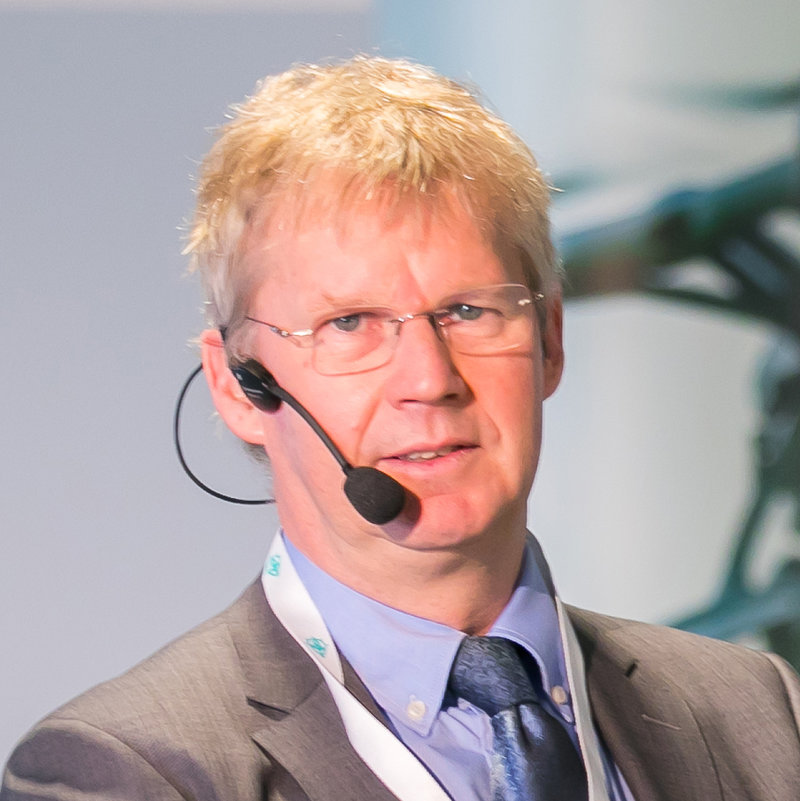
george beers
leader of Work Package 6
Project Management
workpackage 6
Connecting the dots in Smart Farming is the mission of SmartAgriHubs. Against this background the main objective of the SmartAgriHubs project is to consolidate and foster a European wide
network of Digital Innovation Hubs for Agriculture to enhance the digital transformation for
sustainable farming and food production.
During the first year, we increasingly developed ideas about how to shape Digital Innovation Hubs concepts into concrete actions for development of a network and attracting new partners (Digital Innovation Hubs, Competence Centers and others). The challenge for work package 6 (Coordination) is to fit all the puzzle pieces that are needed to build a network together: all the work in the project must come together to reach the mission.
Where workpackage 1 launched the innovation portal, where the Digital Innovation Hubs and Competence Centers can register themselves and exchange information, workpackage 2 (open call) is working directly on network expansion by attracting new innovation experiments. The workpackages 4 and 5 are attracting and empowering the Digital Innovation Hubs and Competence Centers in providing several services, which process is strengthened by the Flagship Innovation Experiments (monitored and evaluated by workpackage 3). We did not do this from scratch, but built on existing projects, such as Internet of Food & Farm 2020 (IoF2020) and other projects and networks on smart farming.
Looking back, the biggest highlights for the first year were for us the Prague Event, making the mission visible with all the partners present and the high-level event with the European Parliament.
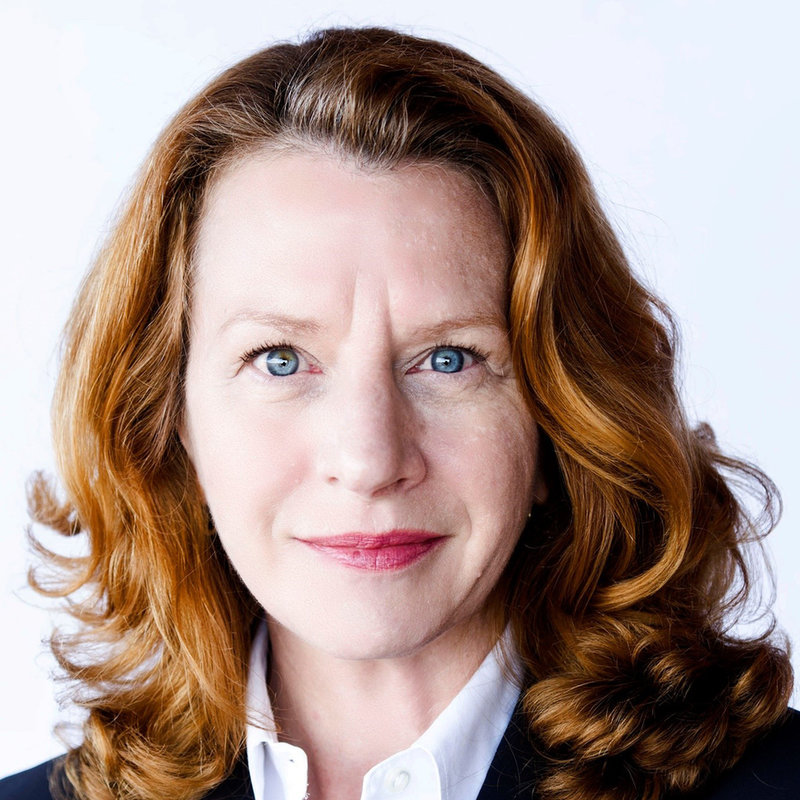
Cynthia Giagnocavo
leader of Work Package 5
Competences Centres
workpackage 5
Work package 5 is committed to the identification of existing Competence Centers for Digital Innovation Hubs and for Innovation Experiments. We have 3 highlights for our achievements of last year to share with you.
We developed the Agricultural Technology Navigator, so that Competence Centers can register and showcase their agri-tech solutions on the Innovation Portal. Next to that, we started with the first phase of the White Spot analysis, in order to determine gaps in agri-tech Competence Center coverage. Also, we are currently in the first phase of tools for Competence Centers: self-evaluation to identify strengths and weaknesses and to plan future action. More on this in the coming year!








